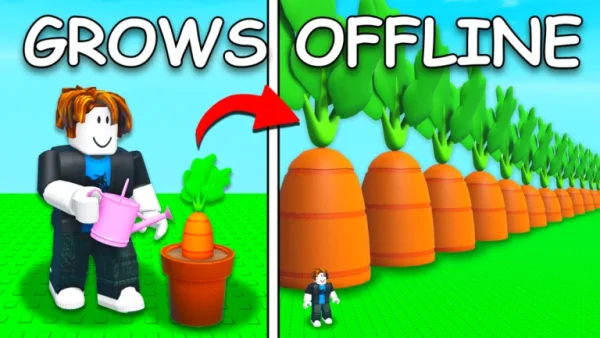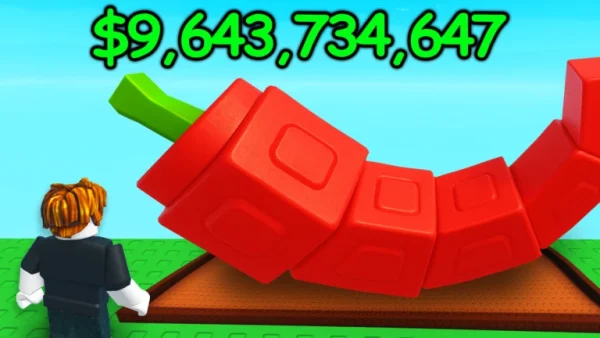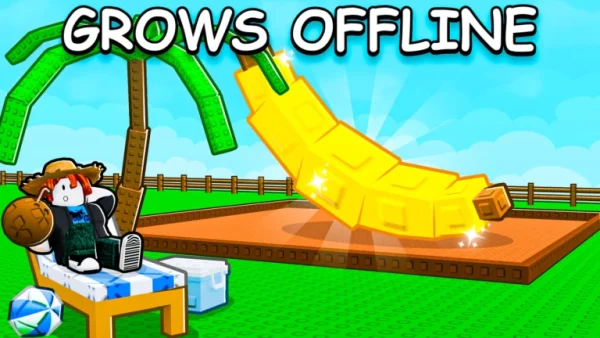Popular Now
Introduction
Roblox: Grow a Garden blends farming mechanics with real-time progression, making it feel immersive and rewarding—for a while. But as players reach mid to late game, a critical issue emerges: real-time waiting. Whether it’s waiting for crops to grow, energy to refill, or tasks to complete, time becomes the biggest gatekeeper in the game. Unlike resource scarcity or automation fatigue, the time mechanic is built into the core gameplay loop. This article explores how Grow a Garden uses time as both a motivator and a roadblock, and why it becomes a source of frustration rather than satisfaction for many players.
1. The Beginning: Real-Time Growth as a Learning Tool
When players first begin their gardening journey, real-time crop growth teaches patience and planning.
Purposeful Delays
Early crops like lettuce take 5–10 minutes to grow, encouraging players to explore other mechanics while they wait.
Engaging Pace
This pacing feels manageable and makes the game feel like it’s part of the player’s routine rather than demanding constant attention.
Benefits:
-
Encourages exploration during downtime
-
Introduces time as a strategic layer

2. The Expansion Phase: Growth Times Multiply
As the garden expands, crops become more valuable—but also take much longer to grow. Tomatoes may take 45 minutes, while rare flowers can take hours.
Rising Wait Times
Advanced crops frequently require 1–3 hours of real-time waiting, meaning a single mistake can waste significant time.
Player Habits Shift
Many players log in only to plant and check back later, reducing active play and engagement.
Result:
-
Intermittent gameplay replaces continuous fun
-
Missed harvests cause schedule anxiety
3. Energy Refill Times and the Idle Wall
Energy regenerates at a slow pace—often just 1 point every 3–5 minutes. Active players hit a wall where they must stop and wait for refill.
Activity vs. Inactivity
Even the most efficient garden can’t function when energy runs out. Players are forced into idle time.
Pressure to Monetize
Robux purchases become more tempting as waiting intensifies, leading to pay-to-skip mechanics.
Side Effects:
-
Breaks game momentum
-
Creates a “log in, do nothing” experience
4. Timers for Crafting and Upgrades
Crafting compost, building new plots, and upgrading tools all involve real-time timers that stack on top of each other.
Long Chains of Delay
A single upgrade might take 1 hour, but requires a component that takes 30 minutes to make—multiplying the wait.
No Queueing System
There’s no automation queue; players must return to initiate the next process, punishing those who aren’t online.
Systemic Delay:
-
Time stacking punishes non-frequent players
-
Upgrades take days without spending Robux

5. Season Timers and Missed Opportunities
Seasonal events (like Spring Festival or Harvest Week) add unique crops and decorations—but are locked behind daily or hourly timers.
Time-Limited Stress
Players feel pressured to log in daily or miss out on exclusive items.
Lack of Grace Periods
Missing one harvest window can mean losing access to a limited recipe for the entire event.
Emotional Effect:
-
FOMO (Fear of Missing Out) drives unhealthy behavior
-
Turns a relaxing game into a stressful routine
6. Co-op Timing Conflicts
In multiplayer gardens, synchronized action is required for maximum efficiency. But real-time waiting affects each player differently.
Asynchronous Frustration
One player may be ready to harvest while another still needs 30 minutes for their crops to mature.
Coordination Breakdown
Teams fall apart when progress becomes desynchronized, especially during timed community events.
Multiplayer Strain:
-
Friends stop playing together due to misaligned timers
-
Real-time mechanics discourage co-op over time
7. Time-Triggered Random Events
Certain bonuses (like golden crop chance or weather events) happen only at specific hours. Players must be online to benefit.
Time-Locked Content
Golden Sunflower Bloom only happens at 5PM server time—a problem for players in other time zones or with fixed schedules.
No Asynchronous Access
There’s no system to make up for missed events, leading to inequality in progression.
Result:
-
Time-rich players dominate the leaderboards
-
Time-poor players fall behind permanently

8. The “Offline Penalty” Problem
Grow a Garden doesn't progress crops, timers, or energy when you're offline unless you've purchased special upgrades or VIP access.
Artificial Delay
Other games simulate time passing even when players log off—Grow a Garden does not.
VIP Advantage
Players who pay for the offline growth feature gain a significant competitive edge.
Inequality Created:
-
Free players are punished for living normal lives
-
Game favors constant online presence
9. Time-Skipping Items and Monetization Pressure
The solution offered is clear: time skips. For a cost in Robux, players can instantly harvest, craft, or refill resources.
Buy to Win Time
While technically optional, skipping time becomes almost necessary to compete in late-game stages or events.
Cost Creep
Time skip items become more expensive for higher-tier processes, pressuring players to spend regularly.
Monetization Cycle:
-
Time frustration → Robux temptation
-
Players feel forced to pay or quit
10. Reimagining Time: Toward a Fairer Model
The core of Grow a Garden’s identity is its real-time pacing, but it needs to evolve into a more player-friendly system.
Possible Improvements:
-
Partial progression offline: Let crops grow 50% while offline
-
Flexible time events: Allow players to choose their time windows for special events
-
Smart notifications: Alert players when crops or tasks complete to reduce missed opportunities
Empowering Time Use
Players should feel in control of their schedule—not chained to it.
A Better Direction:
-
Keep real-time pacing, but reduce its punishment
-
Make waiting feel optional, not mandatory
Conclusion
Real-time waiting in Roblox: Grow a Garden started as an immersive mechanic but has grown into a barrier that stifles fun and discourages casual play. Whether it's crop timers, energy regeneration, or event windows, the constant pressure of the clock creates burnout. While the game’s monetization model encourages players to skip wait times, it also fosters inequality and reduces long-term satisfaction. A more balanced approach—allowing time to enhance the experience instead of dominate it—could transform Grow a Garden into a truly evergreen experience.


















